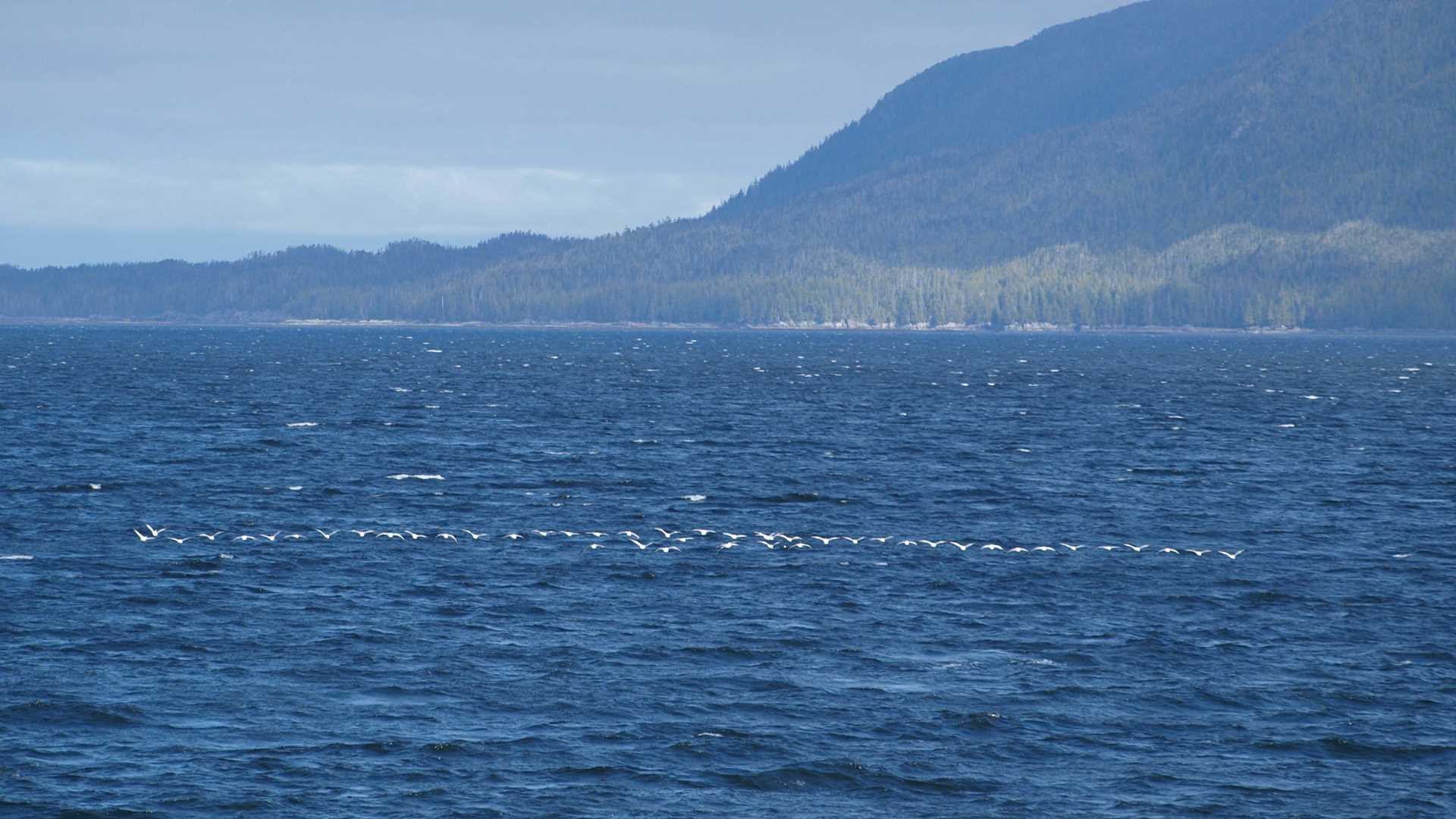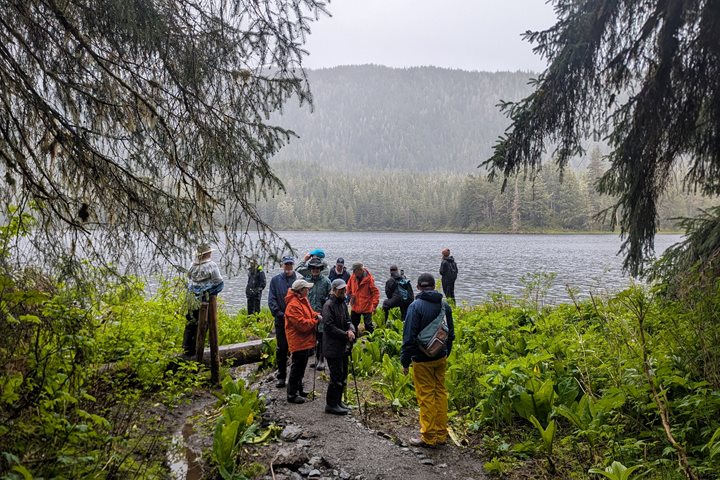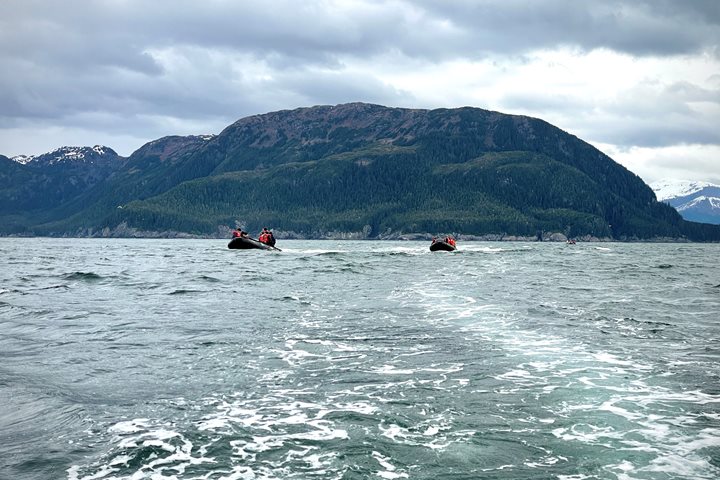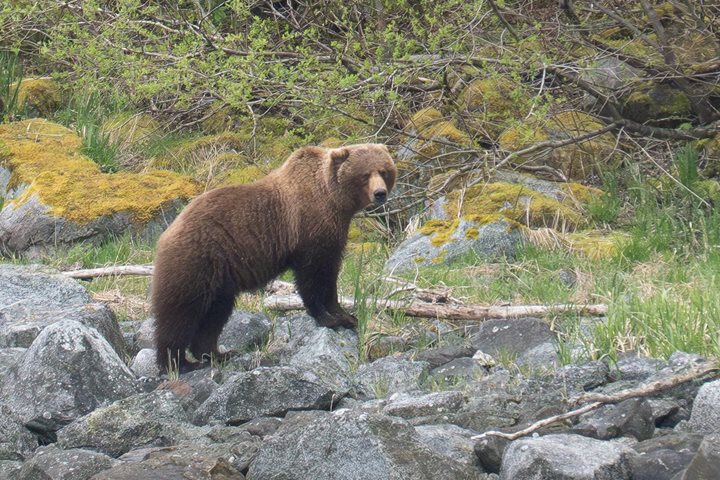With the passing north of Vancouver Island overnight, we had a brief period transiting the only extended portion of the Inside Passage that is exposed to open ocean. Neptune, however, was in a restful mood as he gently rocked our dreamtime, and by morning we were back in the lee of the islands, large and small, that form the protected waters here on the northeastern margin of the Pacific Ocean.
Lighter clothes were left in the cabins as we bundled up to begin the day in brisk winds, under chilly grey clouds. The weather heralded our transition to the wilder, less populated northern coast of British Columbia. The stately Douglas firs of southern B.C. gave way to tall hemlocks, silver firs, and Sitka spruce. Houses and summer camp complexes gave way to a steep, rocky shoreline browed by a dark forest. From a distance we saw a lone humpback whale moving south among the rocky islets near shore, and numerous sea- and shorebirds flew low over the channel waters, including a large flock of snow geese, en route to their Arctic summer range. By mid-morning the sun broke out, and we were treated to a small group of bow-riding Dall’s Porpoises as we headed up the channel.
The weather continued to improve, and by the time we pulled into Green Inlet, blue sky and calm conditions provided an idyllic setting for exploring this narrow fjord by ship and Zodiac boat. This is the land of the Kitasoo First Nations people, and we were able to obtain rare permission to go ashore, with an industrious group of guests foraying into the trackless forest, while other explorers kayaked along the shoreline. We were now in the territory of the white spirit bears, and although they remained elusive to our eyes, even as we cruised the narrow channel to our evening anchorage, near the historic cannery site of Butedale, the wildness and unique character of their home surrounded the ship and ever-present in the minds of all aboard.







